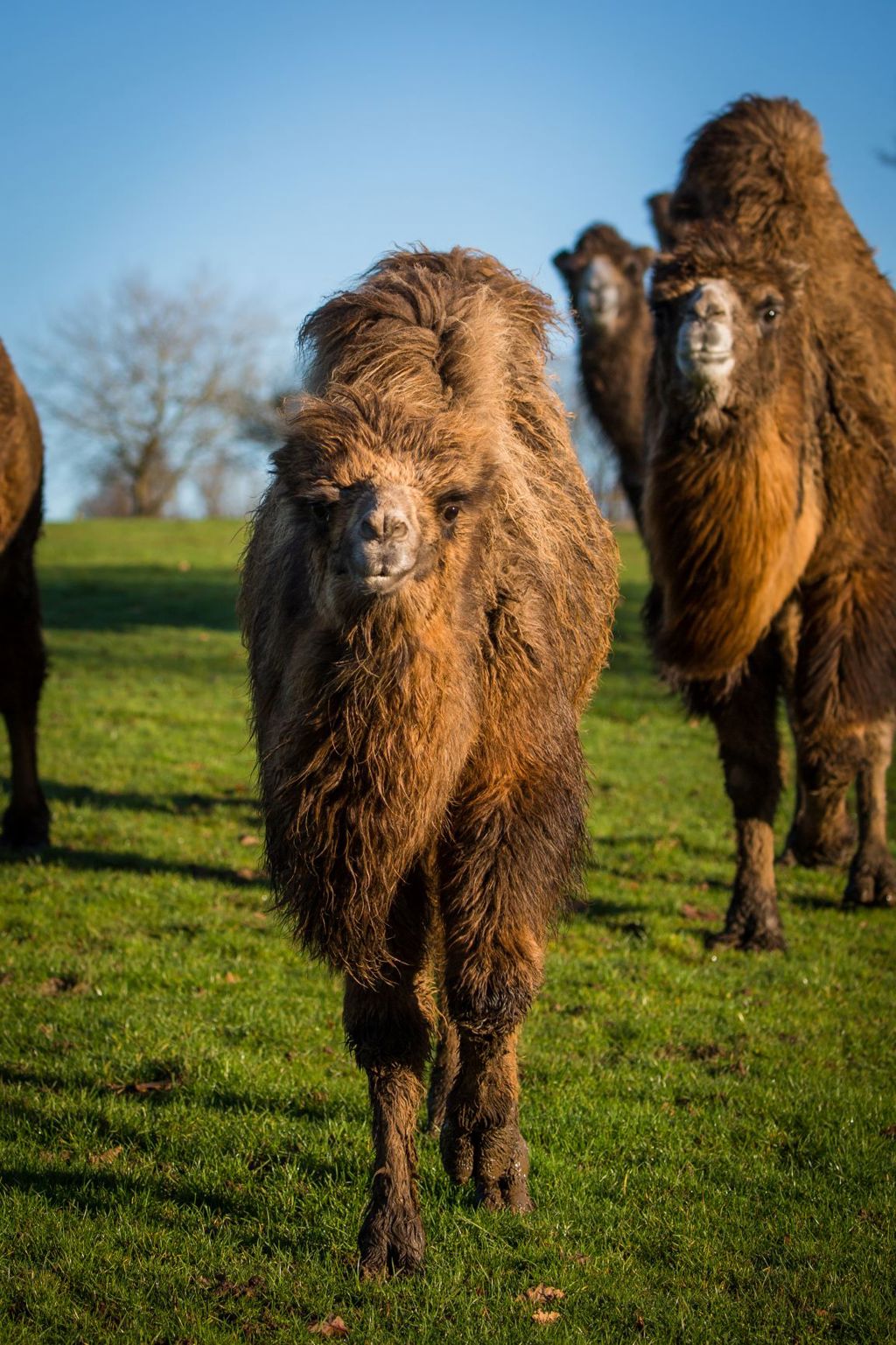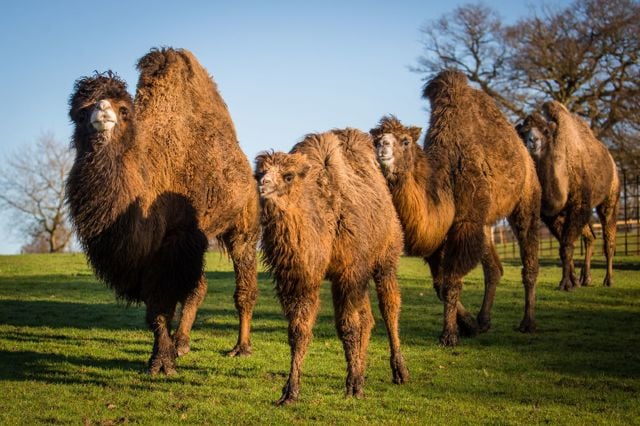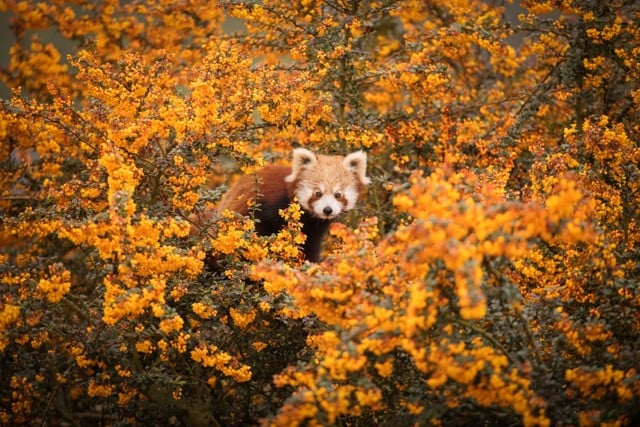Overview
Camels live in herds of 5-30 individuals and are led by a dominant male.
The breeding group of Bactrian camels can be found in their paddock on your way to the ticket lanes, at the start of your Woburn Safari Park adventure.

All about us
| Distribution: | Central Asia |
|---|---|
| Habitat: | Mountainous - desert |
| Height: | 5.9ft-7ft |
| Weight: | 300kg-1000kg |
| Gestation Period: | 14 months |
| Lifespan: | 20-40 years |
| Threats: | Over hunting for meat and skin |
About us
Scientific name: Camelus bactrianus
Bactrian camels are found in central Asia, however these populations are classified as domesticated and the much rarer wild Bactrian camel (Camelus ferus) has been declared critically endangered by the IUCN, with only a few hundred in remote areas of China and Mongolia.

Camels will feed on a wide variety of grasses and plants but they are opportunistic and will eat whatever they find. It is not uncommon to see the herd at Woburn Safari Park stealing whatever they find on the back of the keepers land rovers!
They are migratory animals and their habitat varies from rocky mountains to dry arid deserts. They adapt to their environment well and have thick woolly coats to keep them warm throughout winter which can be shed very quickly in summer so they do not overheat! The range of temperatures within their natural environment can drop to minus 40 degrees and climb as high as 40 degrees centigrade.
Females become sexually mature between 3 and four years old. The gestation period is approximately 14 months and one calf is born.
Males have a distinct breeding period known as musth and during this time they secrete a strong smelling fluid from their glands which they will flick using their tail over their backs. Their body shape dramatically changes as their appetite tends to diminish during this time.
They have long faces and a split upper lip that helps them pick at the sparse array of food that is available to them. Camels have sealable nostrils which enable them to be protected from the often dust and sand storms that occur in their natural range. They have two broad toes on each foot which spread widely when they walk which enables them to cope with sandy conditions.
The Bactrian camel has two humps on its back which contain fat and not water which is often thought to be the case. They do have the ability to go without water for several months but can drink up to 57 litres at one time!
These mammals will also moult during the year, so in late winter/early spring, you may notice them looking slightly 'straggly' as they lose their winter coat ready for the summer months.
They struggle due to habitat loss and competition of grazing and water supplies with domestic camels and other livestock. They are also at high risk of hybridisation with domestic camels, as well as being hunted for their meat and skins.
In summer months when our camels are shredding their winter coats and looking very scruffy, the keepers will pick up big chunks of hair and take it to the wolf enclosure for the wolves to roll around in and play with.

